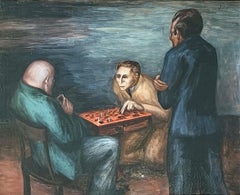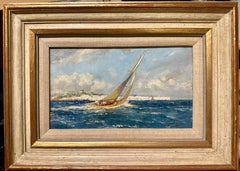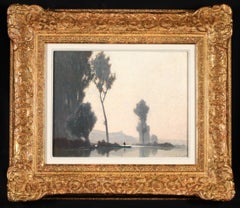Board Figurative Paintings
1930s American Modern Board Figurative Paintings
Gouache, Board, Watercolor
1930s American Realist Board Figurative Paintings
Oil, Board
1930s American Impressionist Board Figurative Paintings
Cardboard, Acrylic
1930s Impressionist Board Figurative Paintings
Canvas, Oil, Board
1930s Impressionist Board Figurative Paintings
Oil, Board
1930s Expressionist Board Figurative Paintings
Oil, Cardboard
1930s Post-Impressionist Board Figurative Paintings
Canvas, Oil, Board
1930s Post-Impressionist Board Figurative Paintings
Board, Oil
1930s Impressionist Board Figurative Paintings
Oil, Board
1930s Realist Board Figurative Paintings
Board, Oil
1930s Board Figurative Paintings
Oil, Board
1930s Modern Board Figurative Paintings
Canvas, Board, Oil
1930s American Modern Board Figurative Paintings
Oil, Board
1930s Post-Impressionist Board Figurative Paintings
Oil, Board
1930s American Modern Board Figurative Paintings
Oil, Board
1930s American Modern Board Figurative Paintings
Oil, Board
1930s American Realist Board Figurative Paintings
Gouache, Board
1930s American Realist Board Figurative Paintings
Oil, Board
1930s Impressionist Board Figurative Paintings
Oil, Board
1930s American Realist Board Figurative Paintings
Synthetic Resin, Fiberboard
1930s Naturalistic Board Figurative Paintings
Board, Oil
1930s American Realist Board Figurative Paintings
Oil, Board
1930s American Realist Board Figurative Paintings
Oil, Board
1930s Cubist Board Figurative Paintings
Cardboard, Oil
1930s American Modern Board Figurative Paintings
Oil, Board
1930s Impressionist Board Figurative Paintings
Oil, Board
1930s Impressionist Board Figurative Paintings
Oil, Board
1930s Impressionist Board Figurative Paintings
Oil, Board
1930s Impressionist Board Figurative Paintings
Oil, Board
1930s Impressionist Board Figurative Paintings
Oil, Board
1930s Impressionist Board Figurative Paintings
Oil, Board
1930s American Realist Board Figurative Paintings
Board, Gouache
1930s American Impressionist Board Figurative Paintings
Canvas, Oil, Board
1930s American Modern Board Figurative Paintings
Board, Gouache
1930s American Modern Board Figurative Paintings
Board, Gouache
1930s American Modern Board Figurative Paintings
Board, Gouache
1930s American Modern Board Figurative Paintings
Board, Gouache
1930s American Modern Board Figurative Paintings
Board, Gouache
1930s American Modern Board Figurative Paintings
Board, Gouache
1930s American Modern Board Figurative Paintings
Gouache, Board
1930s American Modern Board Figurative Paintings
Board, Gouache
1930s American Modern Board Figurative Paintings
Board, Gouache
1930s Academic Board Figurative Paintings
Canvas, Oil, Board
1930s American Impressionist Board Figurative Paintings
Gouache, Watercolor, Cardboard
1930s American Modern Board Figurative Paintings
Oil, Board
1930s American Modern Board Figurative Paintings
Watercolor, Gouache, Board
1930s Board Figurative Paintings
Pastel, Illustration Board
1930s Board Figurative Paintings
Oil, Canvas, Board
1930s American Impressionist Board Figurative Paintings
Cardboard, Acrylic
1930s American Modern Board Figurative Paintings
Gouache, Board
1930s Post-Impressionist Board Figurative Paintings
Board, Oil
1930s American Modern Board Figurative Paintings
Gouache, Oil, Board
1930s American Impressionist Board Figurative Paintings
Gouache, Watercolor, Cardboard
1930s American Modern Board Figurative Paintings
Oil, Board
1930s Post-Impressionist Board Figurative Paintings
Oil, Board
1930s American Modern Board Figurative Paintings
Oil, Board
1930s American Realist Board Figurative Paintings
Board, Oil
1930s Modern Board Figurative Paintings
Board, Oil




